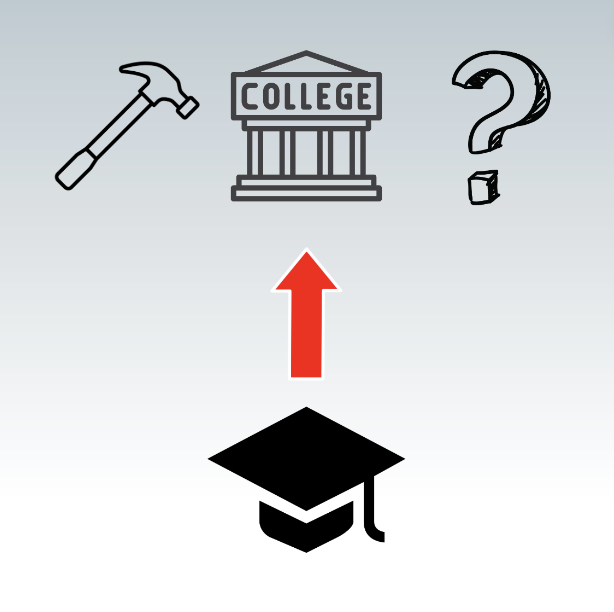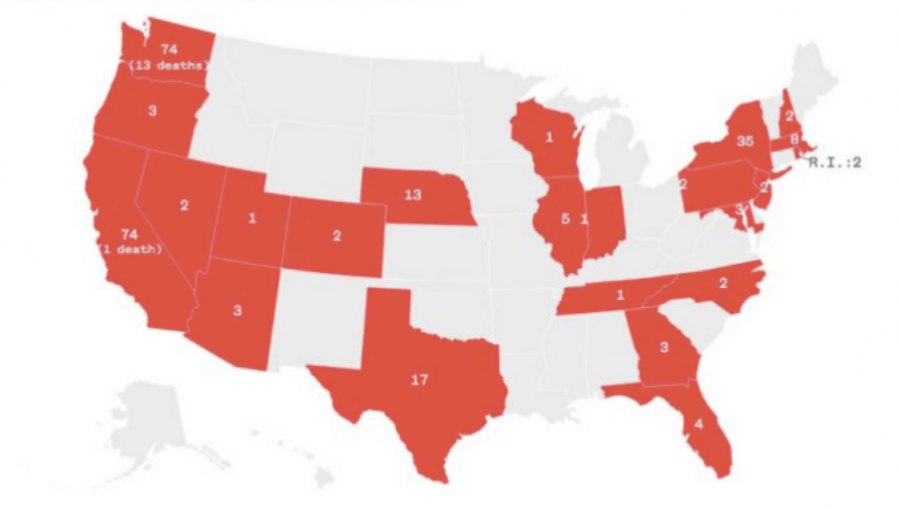In his State of the State address in mid-February, Governor Dannel Malloy spoke of fixing Connecticut’s weak economy and high unemployment rate. “Let’s think big. Let’s be bold,” he urged lawmakers, calling for “revival,” not a “recovery,” and he outlined how that revival would take place—education.
The statistics the governor cites surrounding education present a troubling picture of Connecticut public education, but it must be said that even the statistics are being argued over.
He points out almost half of Connecticut students are in failing districts—41 percent. The state has seen a 6.8 percent decline in graduation rates. Upon entering college, as many as 40 percent of Connecticut students attending Connecticut state universities or community colleges are required to take remedial courses. The achievement gap in Connecticut is the largest in the nation.
According to Malloy, “We simply need better results.”
Malloy says Senate Bill 24, “An Act Concerning Educational Competitiveness,” is aimed at closing the growing achievement gap present across the state by holding teachers and schools more accountable.
Detractors, however, say the bill does little to address the achievement gap, that it demonizes teachers and their unions, and that is an improper use of standardized test scores.
Regardless of the viewpoint, the bill would change major parts of Connecticut education. It focuses on early childhood education, grants more money to underachieving schools, expands the authority given to charter and magnet schools and tries to guarantee that all districts are employing top-notch teachers and principals—with a specific emphasis on reforming tenure.
This bill has evoked questions from parents, teachers and students. What does education mean for high-performing schools? How will it change the job of a teacher, or the role of a student? How many of Connecticut’s socioeconomic issues can be solved through school reform?
The past few months have been filled with lawmakers and citizens alike searching for answers to these questions.
Fast-forward to a PTA-sponsored forum held at Town Hall on April 2—one of many community meetings towns have been holding throughout the state—where three legislators and three teachers answered questions that concerned Westport parents, residents and teachers had regarding the bill.
From this meeting, it was clear that discussions surrounding S.B. 24 are far from over.
Tenure
Malloy’s proposed tenure reform has drawn the most controversy statewide.
By definition, tenure means permanent employment, but what tenure in the education system really provides is a process that must be followed by school administrators in order to remove a teacher who has earned tenure by being employed for more than four years.
Tenure was originally created at the university level to protect professors from teaching controversial, unpopular material in the case of any issues involving those lessons. Essentially, it provides autonomy for their work.
However, some argue that teacher tenure is too easy for teachers to attain and presents an obstacle when trying to remove an ineffective teacher. In his State of the State address, Malloy angered many teachers, saying that to get tenured, “the only thing you have to do is show up for four years.”
Malloy believes tenure should be “re-earned” and should be based upon certain criteria, such as student and school performance, parent and peer input, and administrative evaluation.
His description of tenure offends many teachers who believe they do much more than “show up” on a daily basis.
Yet, there are various education groups who view tenure reform differently.
According to the Connecticut Council for Education Reform, a group backing the governor’s plan, Malloy’s proposal allows for teachers to earn tenure in three years if they receive two “exemplary” ratings, or in five years if they receive three “proficient” or “exemplary” ratings. Once teachers earn tenure, they must receive three “proficient” or “exemplary” ratings every five years to keep it.
Brian Tippy, a Staples English teacher, believes this reform of tenure dramatically changes the face of the term.
“By making tenure something that automatically expires, it isn’t tenure anymore,” Tippy said. “If you have to re-prove that you’re a good teacher every five years, then tenure is effectively over.”
Anne Fernandez, also an English teacher, fully supports the need for tenure.
“I understand now that when you work year in and year out with hundreds of students and hundreds of parents, it’s really hard to keep everybody happy,” Fernandez said. “Everybody has a different point of view about what ‘good education’ looks like.”
However, there are those who don’t feel as strongly attached to tenure.
“I don’t really care about tenure very much,” said Tippy, who is up for tenure this year. “As a cultural thing, I think it’s important that that teachers are protected from individual administrators and school boards. But all tenure means in Connecticut public schools is that there is a process to fire a teacher. We have a process to identify bad teachers and remove them, and it is used.”
Another concern is the availability of administrators to conduct the evaluations of teachers that will now comprise a large portion of a teacher’s tenure evaluation and salary. It is Tippy’s opinion that there are simply too many people to have it function the way it is intended to.
Standardized Tests
In Hartford, only 17 percent of 10th graders read on goal. To Malloy, this is the kind of statistic that shows Connecticut needs change. The governor thinks more data will help close the achievement gap, and that integrating standardized testing into the teacher’s evaluation process is the right tool to reform education.
Under S.B. 24, a state agency, the Performance Evaluation Advisory Council (PEAC), would create the rubric and evaluation process by which teachers’ salary and tenure are determined.
“[The section] is made on the premise that student achievement should be a measurement of teacher quality,” Tippy said.
This portion of the bill has been met with fierce resistance from teachers and some parents across the state who fear the toll teaching to the test already takes on their students and children.
“When you prioritize standardized testing, the teacher is torn between trying to really, really educate, and realizing that they are accountable for test scores. Educating and adding points on a standardized test are really different,” Tippy said.
Improvement on students’ standardized test scores will, as a part of the bill, make up no less than 22.5 percent of a teacher’s evaluation for salary.
According to Malloy, this evaluation is necessary. “People use tests to make judgments, and in this case, it’s not a test, it’s an evaluation of which 22.5 percent actually pertains to tests that people take,” Malloy said in a press conference with high school journalists.
To State Senator Toni Boucher (R-126), this percentage represents a small emphasis. According to Boucher, Connecticut puts much less weight on test scores than other states like New York, which uses the scores for 40 percent of teacher evaluation.
However, Westport Teacher’s Association President Kathy Sharp disagrees. “Standardized tests test student skills, not teacher quality,” she said. Sharp believes that there are too many measurement errors that can affect scores outside of the classroom and outside of a teacher’s control.
Michael Fulton, a Staples teacher, agrees. “You can’t blame teachers if kids come to school unprepared, which here isn’t an issue because Staples students are prepared to read and write efficiently,” Fulton said. “In less privileged districts, kids aren’t all ready to do work, they don’t have the opportunities, and then teachers have to come in and fix that? In 45 minutes, four times a week? That’s impossible.”
State preparedness is a problem with a state that has high poverty levels like Connecticut. In Bridgeport schools, 98.4 percent of students receive reduced or free lunch, which leads many to question whether or not the achievement gap is a product of socioeconomic conditions or education environments.
“We’re not teaching that much better than the teachers two towns over with lower test scores,” Tippy said. “That’s not really a product of teaching. The premise that the achievement gap is propelled by unmotivated teaching primarily could never explain the enormity of this issue. It’s so obviously tied to poverty more than anything else; it’s like saying ‘We’re going to tie your salary to your students’ poverty,’ by only one step in between transitively. It’s really unfair.”
The education reform plan calls for $128 million to be allocated to low-performing school districts to try to lift them from their present achievement standards.
That may sound like a lot, but Connecticut has a lot of underachieving school districts, and schools are costly. Westport’s high school building alone cost $117 million to build.
Overall, Malloy justifies the standardized test portion of the bill with statistics from other states that have implemented it already. “Massachusetts has been in the business of evaluating teachers for years. None of your districts saw tons of teachers flowing over the border from Massachusetts once that system went in, nor did they see it from Rhode Island, nor are they seeing it from New York. It’s a tool to use to reform education, that’s all,” said Malloy.
Charter Schools
Malloy believes charter schools can improve Connecticut education. Subsequently, Malloy originally called for a $2,600-per-pupil budget for charter schools, which has been reduced to $1,100-per-pupil. The $1,000 local contribution for each student that transfers to a charter school has become optional. However, the bill still aims to increase the funding of charter schools.
There are no charter schools in Westport, but there are 17 in the state of Connecticut. What sets a charter school aside from standard public education is not that they aren’t public schools, because they are, but that they are independently run and are sometimes run for profit.
Often, charter schools will teach to a specific curriculum specializing in mathematics, science or a particular humanity.
The governor and charter school supporters point to data that shows that these Connecticut schools are working.
Connecticut Mastery Test results provide evidence that these schools have delivered “not only a greater percentage of students performing at or above the “Proficiency” level than in their local host districts, but they also outpace local districts in year-to-year growth in student achievement. The longer students stay in these schools, the better they do on state tests,” according to the Connecticut Charter School Network.
Opponents to charter schools believe they are not as open as public schools, are anti-union, and they select better performing students.
For example, data from the State Department of Education shows that the percentage of special education students in Bridgeport is almost double the special education students in Bridgeport charter schools.
The bill has undergone multiple alterations and will continue to do so until late April or early May, when it will face a vote by the legislature. On Mon., March 26, the Connecticut Joint Committee on Education released its revised version of the bill, one that Rep. Brenda Kupchick, a member of the committee, believes had “most of the controversial stuff taken out.”
While this assuaged much opposition to the bill, it arrived amidst complaints from legislators who felt that the bill had been revised without the help of committee members and solely by the committee chairpersons “behind closed doors.”
Kupchick, one of the committee members who was not satisfied with the revision process, believes that people should be able to see what is happening in the legislature, and that the “closed door” policy is “unhealthy.”
Malloy has said he will not sign the bill as it currently stands. According to Patrick Riccards of ConnCan, an education reform advocacy group, “The current bill is a watered-down version of the initial proposal.”
S.B. 24 heads to the Appropriations Committee next, where budgets will be discussed. From there, it will go to the full Senate, the House of Representatives, and finally, perhaps, back to the Governor’s desk by the start of May.
Additional reporting contributed by Julian Clarke ’12.



















































